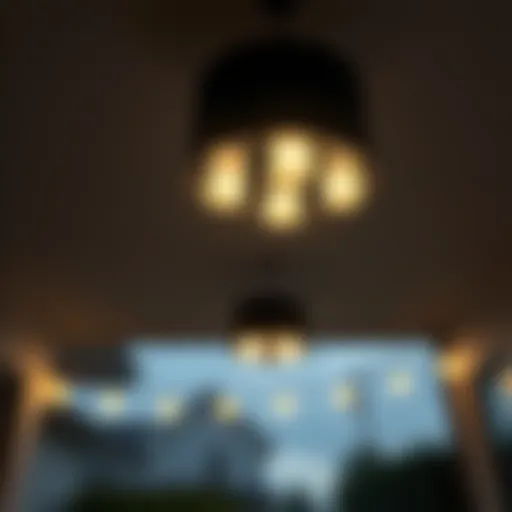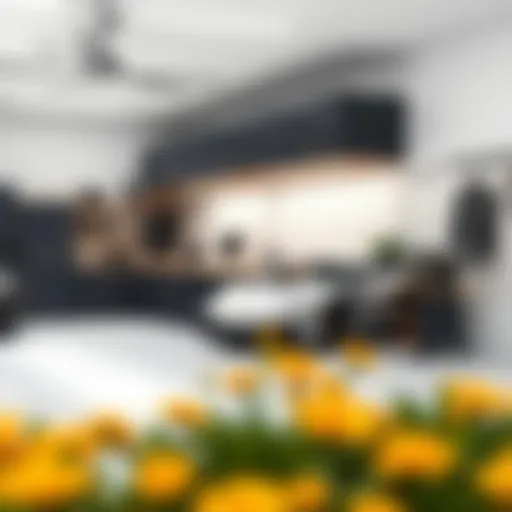Kitchen Cabinet Design and Colour: Trends & Tips
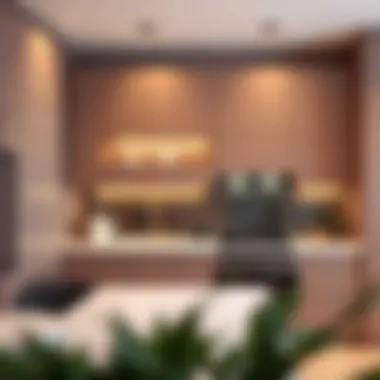
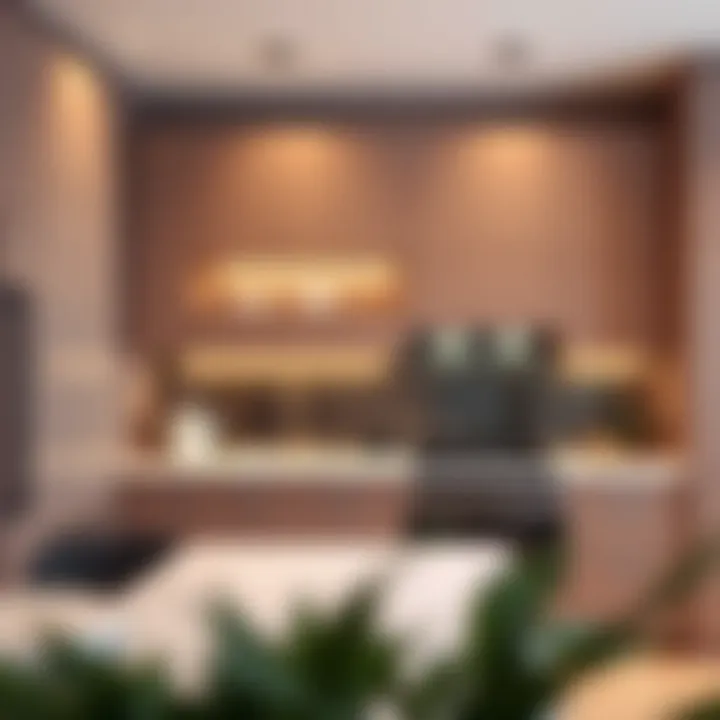
Intro
Kitchens have long served as the heart of the home, and their design can significantly influence both functionality and ambiance. Within this space, kitchen cabinets stand as foundational elements that not only provide essential storage but also serve as vital design components that contribute to the overall aesthetics. Understanding the significance of kitchen cabinet design and color is crucial for homeowners, designers, and DIY enthusiasts alike. The choices made in this area can transform a mundane kitchen into a striking culinary haven.
In this exploration, we dive deep into essential factors affecting cabinet design, examining current trends in style and color, materials in vogue, and practical insights to guide effective decision-making. By analyzing these components, readers can glean the knowledge necessary to enhance both the appeal and usability of their kitchens.
Furniture Styles and Trends
Modern vs. Traditional: Understanding the Aesthetics
When considering kitchen cabinets, the debate between modern and traditional styles often surfaces. Modern design emphasizes clean lines, simplicity, and a minimalistic approach. Challenging the norm, you might witness cabinets crafted out of sleek materials like acrylic, glass, or high-gloss laminate. These lend an air of sophistication and are perfect for those looking to achieve a contemporary look.
On the other hand, traditional kitchen cabinets exude warmth and character. They typically incorporate natural woods with intricate details, such as raised panel doors and decorative moldings. These cabinets offer a classic charm that resonates with nostalgic sentiments and comfort.
- Key Points of Modern Cabinets:
- Key Points of Traditional Cabinets:
- Smooth, flat surfaces
- Minimal embellishments
- Utilization of innovative materials
- Rich woods like oak or cherry
- Detailed craftsmanship
- Often painted or stained for a rustic finish
Deciding between these aesthetics can hinge on personal taste as well as the overall design scheme of the home. A well-chosen cabinet style can provide a harmonious look, making the kitchen feel cohesive.
Color and Material Trends: What's In and What's Out
Not only do styles play a role; color and materials are also significant factors. Over the last few years, the trend towards more bold colors, like navy blue or emerald green, has gained traction. These hues can instantly uplift a kitchen space, making it inviting yet chic. Neutral colors, such as soft whites or greys, continue to hold their ground, offering a timeless elegance that never seems to fade.
In terms of materials, there's an observable shift towards sustainable options. Many homeowners are now opting for cabinets made from reclaimed wood or eco-friendly finishes that are less harmful to the environment. This focus on sustainability also speaks to a broader trend of holistic living and taking responsibility for one’s choices.
- Current Color Trends:
- Material Preferences:
- Dark, moody colors for a dramatic effect
- Soft pastels capturing a gentle vibe
- Timeless neutrals maintaining balance
- Reclaimed wood
- Bamboo for sustainability
- High-quality laminates for modern aesthetics
Investing time into understanding these trends can markedly influence the end result of a kitchen renovation, guiding choices that align with aesthetic and functional goals.
"Your kitchen is where life happens. Choosing the right cabinets is crucial for enhancing not just the look but also the feel of this vital space."
For further insights into kitchen renovation and design trends, visiting resources like Wikipedia or Britannica can be beneficial.
Prolusion to Kitchen Cabinet Design
When stepping into a kitchen, the first thing that grabs attention is the cabinetry. This element does far more than just store pots and pans; it shapes the overall ambiance of the space. Kitchen cabinet design intertwines functionality with aesthetics, creating a pivotal role in how a kitchen both looks and performs.
Importance of Thoughtful Design
Designing kitchen cabinets goes beyond picking a color or style. Homeowners, designers, and DIY enthusiasts should consider ergonomics, durability, and visual appeal. For instance, cabinets that are easy to reach or open add convenience in daily chores. It's these little nuances that make a kitchen feel welcoming and practical.
Key Benefits
- Optimized Functionality: Well-designed cabinets enhance workflow. The strategic placement of drawers and shelves ensures easier access to kitchen tools.
- Visual Appeal: An aesthetically pleasing cabinet design contributes to overall home value. A well-thought-out arrangement can influence potential buyers, making it a crucial consideration.
- Customization Options: Many cabinetry solutions allow homeowners to tailor designs that fit their personal style. This adaptability is essential for those who want uniqueness in their space.
Design Considerations
- Material Selection: Different materials offer distinct benefits. For example, wood provides warmth and can be styled traditionally, while metal or laminate might speak to a more industrial or modern flavor.
- Color Choices: The hues you select can dramatically affect mood. Light colors can brighten a small kitchen, while darker shades might evoke sophistication.
- Cabinet Construction: The method of construction can vary widely, from framed to frameless designs. Each style presents its own advantages based on space and functionality.
"Quality kitchen cabinets not only suit your taste and preference but also stand the test of time."
This exploration of kitchen cabinet design isn't merely an academic pursuit but rather an essential guide for anyone looking to improve their kitchen space. It empowers individuals to make choices that best serve their cooking habitats, ensuring they remain as functional as they are beautiful. This section lays the groundwork for understanding how important these elements are, setting the stage for deeper dives into trends, colors, and materials in the subsequent sections.
The Evolution of Kitchen Cabinets
Understanding the evolution of kitchen cabinets provides essential insight for anyone looking to upgrade their kitchen. This journey isn’t just about aesthetics—it's about how functionality has transformed over time, reflecting the changing needs and lifestyles of homeowners. Today's kitchen cabinets serve dual roles, merging timeless design with practical solutions. By studying the trajectory of kitchen cabinetry, designers and homeowners can make informed decisions that resonate with both historic style and modern sensibilities.
Historical Perspectives on Kitchen Cabinetry
Historically, kitchen cabinets weren’t the organized storage solutions we envision today. Before the late 19th century, kitchens often featured open shelving or large, freestanding cupboards. Households relied on hutches and sideboards for storage. These pieces were often ornately carved and served as focal points in the kitchen.
In ancient Europe, cabinets were used primarily for displaying fine china and were placed in prominent areas of the home. They symbolized social status more than comfort or efficiency. By the 18th century, as more homemakers began cooking extensively, the vernacular of kitchen design started to transform. Rooms were bigger, and kitchens began to take on a communal role.
Notably, the Industrial Revolution marked a seismic shift. With mass production, cabinets started being built from more affordable materials. As the 20th century rolled in, Mid-Century Modern designs prioritized functionality while still embracing an artistic flair. The emergence of built-in cabinetry revolutionized how kitchens were planned and executed. What had once been a space defined by haphazard arrangements became efficiently laid out spaces that harmonized with other living areas.
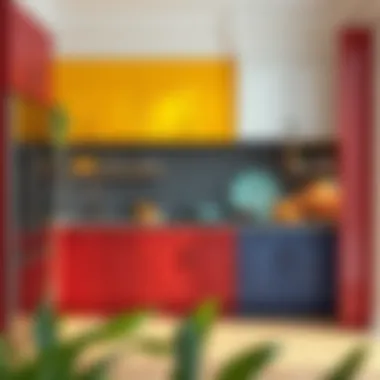
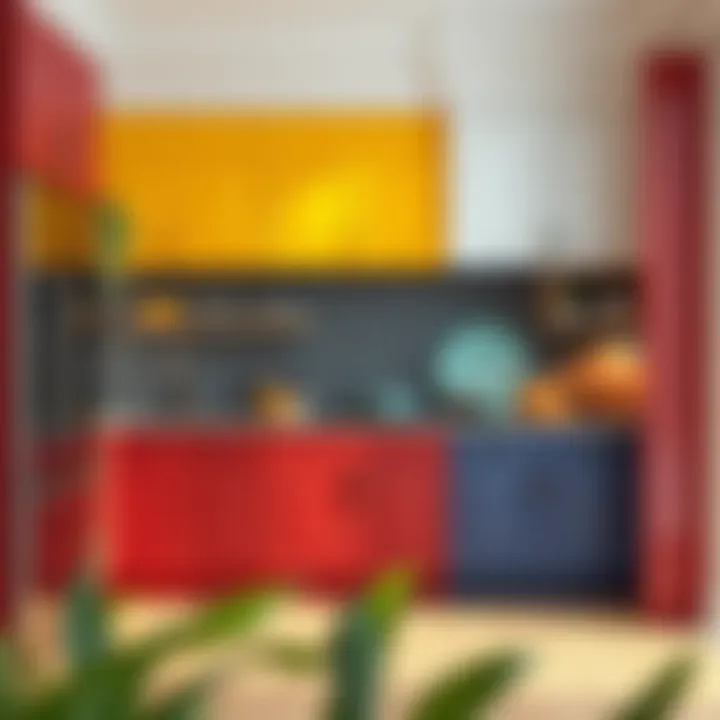
Modern Innovations in Cabinet Design
Today, kitchen cabinet design stands at the intersection of technology and creativity. Innovations like modular cabinetry offer flexibility, allowing homeowners to customize their kitchen spaces to suit unique lifestyles. The incorporation of smart technology into cabinets is burgeoning; think about motion sensors that open cabinets without requiring you to touch a handle. Sounds futuristic, right?
Another significant trend is the use of sustainable materials. Whether it’s bamboo or reclaimed wood, environmentally-friendly choices have turned heads in the design world. Reimagining craftsmanship has never been easier with the integration of digital technology. CNC machines can create intricate designs that were once limited to skilled artisans. With systems such as 3D printing introducing new ways to fabricate cabinet prototypes, the possibilities are seemingly endless.
"Embracing modern innovations means not just following trends but creating spaces that cater to how we live today."
Color is another area seeing dynamic developments. Painted cabinets, once tied to specific styles, now come with advanced finishes that promise more durability and easier maintenance. Bright shades or muted tones can pinpoint personality while ensuring long life. Homeowners can choose finishes that reduce scratches, repel stains, and stand up against everyday wear and tear.
As we look ahead, the evolution of kitchen cabinets hints at endless opportunities that align with practical and aesthetic desires. By blending the past with the present, current designs honor tradition while daring to step into the future.
Key Elements of Cabinet Design
When delving into the world of kitchen cabinet design, it’s crucial to recognize that it’s not just about aesthetics. The elements that define a cabinet’s design play an integral role in enhancing the kitchen's overall functionality and style. This section will carefully evaluate the foundational aspects of cabinet design, which include material choices, cabinet construction methods, and the selection of hardware and accessories. Understanding these components can empower homeowners and designers to create kitchens that are both visually pleasing and highly functional.
Material Choices and Their Implications
The choice of materials for kitchen cabinets can dramatically influence not only the look but also the performance and longevity of the cabinetry. Common options like hardwood, plywood, and MDF each come with distinct characteristics. For instance, hardwood cabinets such as oak or maple are often celebrated for their durability and classic aesthetic. However, they can also be a significant investment.
Plywood offers a good balance—it's sturdy and less susceptible to warping compared to solid wood. MDF, on the other hand, provides a smooth finish that's perfect for paint but is less durable in high moisture environments, like kitchens. When deciding on materials, considerations should include how the kitchen will be used, moisture levels, and even the climate where the home is located.
"Choosing the right material is like selecting the right foundation for a house; it determines strength and longevity."
Additionally, energy efficiency and sustainability are becoming increasingly important to consumers. Eco-friendly materials, sourced responsibly, provide both a healthier home environment and a smaller carbon footprint. For those looking to make a conscientious choice, options such as bamboo or recycled wood may appeal.
Cabinet Construction Methods
The construction method employed in making cabinets can significantly impact their durability and performance. Joint types, for example, hold great significance. Dovetail joints are often considered the gold standard due to their strength and resistance to pulling apart, especially in drawer construction. Meanwhile, butt joints are less time-consuming to create but can lack durability.
Furthermore, the thickness of cabinet walls and shelves contributes to the overall sturdiness. A more robust cabinet will typically have thicker panels, which translates to greater load-bearing capacity—an important consideration when planning storage organization.
It’s also worth noting the construction method can influence the cost. Custom cabinets, often built using meticulous craftsmanship techniques, will tend to be pricier than pre-manufactured options, which may come with limitations in both design and materials. Homeowners must assess their budget, style preferences, and long-term investment goals when determining the proper construction approach.
Hardware and Accessories
Hardware can make or break a cabinet’s functionality and its visual appeal. Drawer pulls, knobs, and hinges are more than just functional elements; they can serve as décor statements. When selecting hardware, it’s wise to consider the overall kitchen style. For instance, sleek, minimalist handles suit contemporary designs, while ornate knobs may enhance traditional aesthetics.
Beyond mere style, choosing quality hardware is key to achieving long-lasting performance. Soft-close mechanisms, for example, prevent slamming and extend the life of both drawers and doors. Additionally, hardware should be chosen that complements the material and finish of the cabinetry.
Popular hardware styles include:
- Brushed nickel
- Oil-rubbed bronze
- Polished brass
As trends evolve, integrating accessories like pull-out shelves or built-in organizers can elevate a kitchen’s functionality. Such enhancements not only maximize storage but also facilitate ease of use, particularly in smaller spaces where organization is paramount.
Exploring Kitchen Cabinet Styles
The exploration of kitchen cabinet styles goes beyond merely selecting a design for visual appeal. It's a journey into understanding how various styles can impact the functionality and ambiance of a kitchen. When homeowners and designers dive into this topic, they discover that this choice can shape not just the kitchen's aesthetic but also its usability. This section aims to illuminate the nuances of various styles—from traditional to industrial—allowing for informed decisions that bring out the best in a kitchen space.
Traditional vs. Contemporary Designs
In the realm of kitchen cabinetry, traditional and contemporary designs stand at opposite ends of the spectrum, yet both hold enduring appeal. Traditional designs often boast rich wood finishes, detailed moldings, and classic hardware, reflecting a sense of warmth and authenticity. These elements convey history and craftsmanship, creating a kitchen that feels inviting and timeless.
On the other hand, contemporary styles embrace modern aesthetics with clean lines, minimalist hardware, and innovative materials. Bright colors and glossy finishes often characterize these designs, lending a sense of airiness and sophistication. Both styles have distinct advantages; traditional styles often bring character and nostalgia, while contemporary designs offer sleek functionality and a fresh feel. The challenge lies in choosing one that resonates with personal taste while considering the overall layout and lighting of the kitchen.
Minimalist Aesthetics for Modern Kitchens
Minimalism is all about less is more. In kitchen design, this philosophy manifests through cabinets that prioritize sleek silhouettes and functional elements without the clutter. A minimalist aesthetic typically opts for subdued color palettes, flat-front cabinetry, and hidden handles, emphasizing simplicity and openness. This style not only fosters a spacious feel, especially in smaller kitchens, but it also encourages homeowners to maintain cleanliness and organization.
To achieve this look, consider using natural materials like light woods or even engineered surfaces that maintain an understated elegance. The absence of excessive adornments enables the surrounding decor—like splashes of color in accessories or unique light fixtures—to shine. Moreover, the minimalist approach is ideal for those who appreciate practical solutions over opulent designs, creating an environment that feels tranquil and modern.
Rustic and Country-Inspired Looks
For those who dream of a cozy, inviting kitchen, rustic and country-inspired styles offer a breath of fresh air. These designs are marked by their use of natural materials, such as reclaimed wood and stone, which create a warm and earthy atmosphere. Imagine cabinets with a weathered finish, giving off an aged but graceful appearance, often adorned with wrought iron handles that hint at craftsmanship.
Key characteristics of rustic styles include open shelving, which invites display of personal collections, and a blend of vintage and contemporary elements that tell a story. The charm of these kitchens lies in their authenticity, where imperfections often add character. Add in soft, muted colors inspired by nature—think earthy browns and soft greens—and the kitchen becomes a serene retreat.
Industrial and Urban Styles
As urban living expands, industrial kitchen designs have gained traction for their raw and edgy appeal. Often seen in lofts and modern city apartments, this style showcases elements like exposed brick, steel, and reclaimed wood for an unrefined elegance. Kitchen cabinets in industrial spaces often feature mettalic accents and darker color schemes, lending to a daring yet sophisticated look.
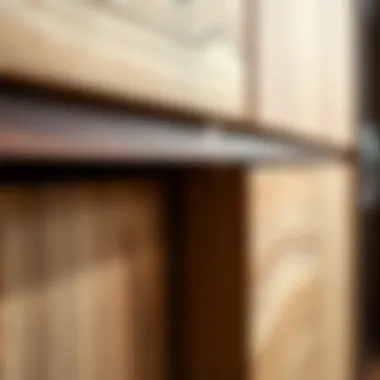
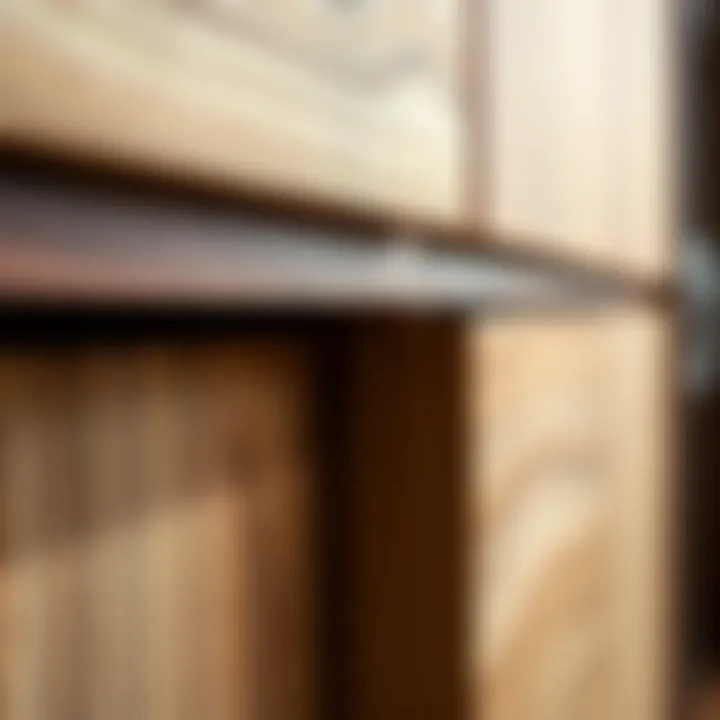
Cabinets in this style typically have a more utilitarian appearance, favoring function over ornate design. Consider open shelving made from metal piping or cabinets with sliding doors that reflect the spirit of industrial manufacturing. For a cohesive look, incorporate other urban elements, like concrete countertops and contemporary appliances, while ensuring that practicality remains at the forefront. This style is perfect for those who appreciate an edgy and unorthodox aesthetic in their culinary space.
Exploring the diverse styles of kitchen cabinetry allows homeowners and designers alike to tailor spaces that not only reflect personal tastes but also accommodate practical needs. Whether one opts for the heartwarming embrace of rustic charm or the sleek lines of minimalism, understanding various styles lays the foundation for creating a kitchen that truly stands out.
The Role of Colour in Kitchen Design
In the realm of kitchen design, colour occupies a pivotal role that extends beyond mere aesthetics. It's an influential aspect that can significantly affect the atmosphere and functionality of the space. When homeowners or designers embark on a renovation journey, understanding the power of colour helps to create not just a pleasant environment but also a practical one. The right colour scheme can enhance the perceived size of the kitchen, influence the mood, and even affect how one feels while preparing meals.
Selecting a cohesive palette requires careful thought about how the chosen colours interplay with lighting, materials, and other design elements.
Understanding Colour Theory
To grasp the essence of kitchen colour design, one must first familiarize oneself with colour theory. Colour theory provides a framework that explains how colours interact and how they are perceived.
- Primary, Secondary, and Tertiary Colours: These are the foundational elements of colour mixing. Understanding how to blend them can lead to harmonious combinations in any kitchen design.
- Warm vs. Cool Tones: Warm colours like reds, oranges, and yellows can create an inviting atmosphere, while cool colours such as blues and greens bring a sense of calm and spaciousness.
- Colour Wheel: This tool is invaluable for visualizing colour relationships. Complementary colours, placed opposite on the wheel, create vibrant contrasts, while analogous colours, which sit beside one another, produce soothing harmony.
Utilizing these principles can lead to a well-thought-out kitchen cabinet colour scheme that is not only visually appealing but also aligned with the intended atmosphere of the kitchen.
Popular Colour Palettes for Cabinets
When it comes to kitchen cabinets, certain colour palettes frequently emerge as favourites among designers and homeowners alike. Here are some of the most popular:
- Soft Neutrals: Shades of white, beige, and grey. These colours create a timeless backdrop, allowing for versatile decor.
- Bold Blues: From navy to royal, blue cabinets can add a striking element while maintaining a classic vibe.
- Earthy Greens: Olive and sage shades bring a touch of nature indoors, making the kitchen feel rustic and homely.
- Deep Charcoals: A modern take that provides depth and can beautifully complement lighter countertops and backsplashes.
Each palette affects the overall feel of the kitchen, making it essential to choose wisely based on personal style and the desired ambiance.
Impact of Colour on Mood and Space
The psychological aspect of colour in spaces is profound. Various colours can evoke certain feelings and perceptions:
- Energetic: Bright yellows and oranges can inspire energy and liveliness, perfect for family gatherings.
- Relaxed: Soft blues and greens tend to promote tranquility, ideal for kitchens that serve as a gathering place or personal retreat.
- Welcoming: Warm tones create a sense of comfort, making kitchens feel more inviting to residents and guests alike.
Understanding these emotional connections to colours allows homeowners to tailor their kitchen spaces to reflect their lifestyles and preferences.
Trends in Cabinet Colours
Keeping up with current trends is vital for those looking to keep their kitchen designs fresh and appealing. Some emerging trends in cabinet colours include:
- Matte Finishes: Here, the finish plays a critical role. Matte cabinet finishes are gaining popularity for their modern look and ability to hide fingerprints and smudges.
- Two-Tone Cabinets: Mixing two colours, often a bold hue with a neutral counterpart, offers a dynamic visual interest.
- Bold Accents: Incorporating bright colours in otherwise neutral cabinetry can create focal points without overwhelming the entire scheme.
Homeowners should stay abreast of these trends to maintain contemporary appeal, while also considering timeless choices that ensure longevity in their design decisions.
Ultimately, the way colours are applied in kitchen design can make the space not only functional but also an expression of personal taste.
In summary, the role of colour in kitchen design can’t be underestimated. A well-chosen colour scheme not only enhances the visual harmony of the kitchen but also transforms it into a space that resonates with warmth, comfort, and functionality.
Combining Design and Functionality
When it comes to kitchen cabinets, the art of marrying design and functionality is paramount. A kitchen is not only a space for cooking but also a hub for family gatherings and entertaining guests. The balance of aesthetic allure and practical utility transforms an ordinary kitchen into an extraordinary one. Design may catch the eye, but functionality keeps the heart of that kitchen beating smoothly.
Optimizing Storage Solutions
Storage is the unsung hero of kitchen efficiency. Cabinets must provide ample room while looking sleek. For homeowners, a thoughtful design means capitalizing on vertical space, using pull-out shelves, or incorporating lazy Susans. It’s no secret that clutter can chisel away at a kitchen’s tranquility, establishing a clear organization can alleviate stress and promote a seamless cooking experience.
- Vertical Storage: Make use of your walls. Install cabinets that extend up to the ceiling, ensuring that every inch serves a purpose.
- Pull-Out Shelves: Perfect for those deeper cabinets; these create easy access to items that often get lost in the back.
- Lazy Susans: No one wants to be playing hide and seek with spices. These rotating trays make accessing ingredients a breeze.
By investing time in cabinet storage designs, homeowners can ensure their kitchens are as functional as they are visually appealing, making each nook and cranny count.
Enhancing Workflow in the Kitchen
An efficient workflow hinges on the thoughtful layout of kitchen cabinets. Designers often talk about the 'kitchen triangle' — the space between the sink, stove, and refrigerator. The design should allow for fluid movement between these key areas.
Fostering an ergonomic environment is another essential aspect to ponder. Here are some considerations:
- Ease of Access: Cabinets that require excessive stretching or bending negate convenience. Place frequently used items at a comfortable height.
- Zoning: Create functional zones for prep, cooking, and cleaning within the cabinets. Group similar items together to enhance efficiency.
- Lighting Considerations: Good illumination around cabinets can make a world of difference. Under-cabinet lighting can highlight your workstation and add an inviting glow that aids in navigation.
"The kitchen should be a harmonious blend of where function meets beautiful design."
In summary, when combining design and functionality, the aim is to create an environment that serves both beauty and purpose. A kitchen cabinet’s appeal lies not just in its outward charm but also in its ability to perform and facilitate a smooth cooking and living experience.
Sustainable Design Practices
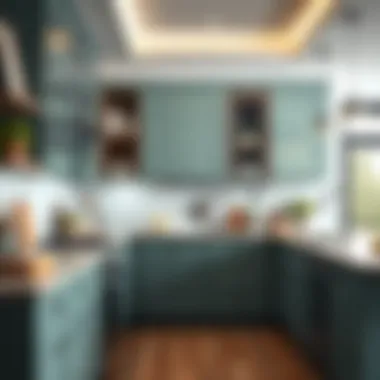
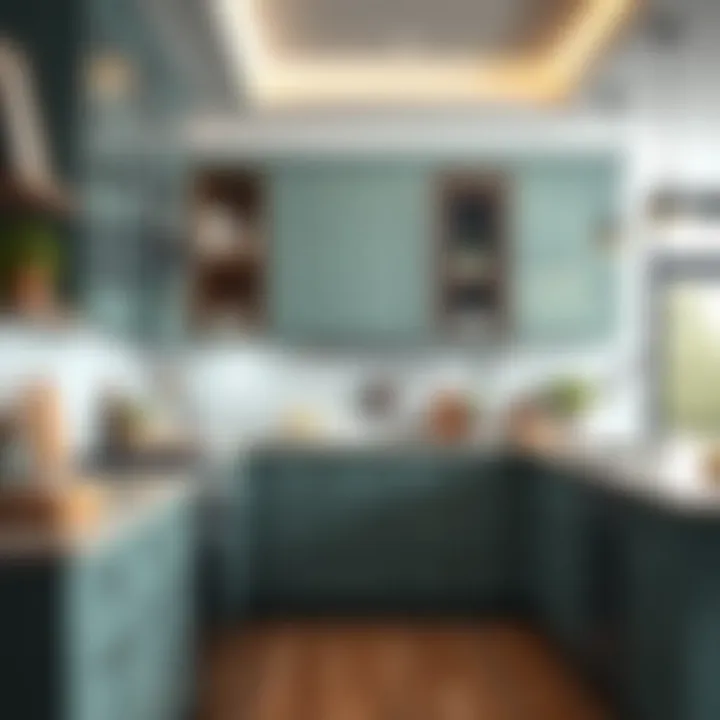
Sustainable design in kitchen cabinetry isn’t just a trend; it’s a necessity for a healthier environment and a wise investment for both your wallet and the planet. As awareness of environmental issues rises, homeowners and designers are increasingly seeking solutions that minimize waste and promote durability. This section dives into the significance of sustainable practices in cabinet design, emphasizing the advantages, considerations, and long-term benefits of eco-friendly approaches.
Eco-Friendly Materials for Cabinets
When it comes to cabinet construction, the materials selected play a pivotal role in sustainability. Consideration should be given to renewable resources, such as bamboo or reclaimed wood. These options not only boast a lower environmental footprint but also add unique character to your kitchen.
- Bamboo: Fast-growing and highly renewable, bamboo cabinets are naturally resistant to moisture, bringing both durability and style.
- Reclaimed wood: Sourcing wood from old buildings or furniture lends a rustic charm while helping reduce deforestation. Each piece tells a story, connecting past and present in your home.
- Low-VOC finishes: Choosing paints and finishes that emit fewer volatile organic compounds is crucial. This not only preserves indoor air quality but also reduces harmful emissions in production.
- Particleboard and MDF with low formaldehyde: These materials can still provide a cost-effective option without contributing to air pollution from hazardous chemicals.
These materials align with growing consumer expectations for sustainability while maintaining aesthetic appeal. Each selection merges beauty with conscientiousness, prioritizing eco-friendliness without sacrificing design integrity.
Reducing Environmental Impact in Kitchen Renovations
Embarking on a kitchen renovation is an opportunity to prioritize sustainability and lessen your environmental impact. Various strategies can be employed throughout the remodeling process.
- Repurpose existing materials: Before making new purchases, assess what can be retained. Refinishing old cabinets or replacing hardware can breathe fresh life into your kitchen without the need for new materials.
- Energy-efficient appliances: Integrating appliances that consume less energy not only conserves resources but also lowers utility bills in the long run. Look for ENERGY STAR® labels, which signify compliance with strict energy-efficient guidelines.
- Proper disposal of old materials: When parting ways with old cabinets, don’t just toss them out. Donate usable cabinetry to organizations like Habitat for Humanity, or find local recycling centers that accept kitchen materials. This can prevent waste and support community initiatives.
"Sustainability isn't just about being 'green'—it's about making decisions that honor our resources and the craftsmanship that goes into creating our homes."
Fostering a sustainable mindset in kitchen renovations reflects broader environmental considerations. By opting for eco-friendly materials and thoughtful waste management, homeowners contribute to a more sustainable future while enjoying a stylish, functional space. As these practices become standard, the kitchen can transform into both a culinary and ecological haven.
Choosing the Right Cabinet Finish
Selecting the right finish for kitchen cabinets is a crucial step that can radically influence the overall look, feel, and functionality of the space. The finish serves not only as a protective layer but also adds character and depth to the wood or material beneath. A well-chosen finish enhances both the beauty of the cabinets and their durability, ensuring that they can withstand the rigors of daily use while also looking good. Since kitchen cabinets often occupy significant visual real estate, the finish can dramatically change the room’s ambiance and style, tying together various design elements.
Exploring Different Finish Options
There are several finish options available, each with its unique characteristics. Here is a brief overview of some popular choices:
- Painted Finish: Offers an array of colors and can easily match or contrast with the overall kitchen design. Comes in glossy, satin, and matte finishes. A matte finish is less reflective while glossy offers a striking shine.
- Stained Finish: This allows the natural wood grain to show through, adding warmth and richness. Different stains can create effects ranging from light and airy to dark and moody.
- Varnished Finish: Provides a protective layer that is both durable and water-resistant. Great for high-traffic areas, though it can sometimes diminish the natural wood aesthetic.
- Lacquer Finish: Harder than varnish and leaves a smooth, mirror-like surface. It's fast-drying and offers a glossy look, making it an excellent choice for modern kitchens.
- Oil Finish: This enhances the wood’s natural character and tones but typically requires more regular maintenance to keep it looking fresh.
Each option comes with its pros and cons, requiring careful thought as to which aligns with your kitchen’s style and your maintenance preferences.
Impact of Finish on Design and Maintenance
The finish chosen will have a profound effect not only on the cabinets' appearance but also on their upkeep. For instance:
- A glossy finish can be easier to clean but might show fingerprints more readily.
- Conversely, a matte finish can hide fingerprints well but may be more susceptible to stains and require more frequent cleaning.
Furthermore, the type of finish impacts the overall durability of the cabinetry. For example, a high-quality varnish can provide excellent resistance against moisture—crucial in a kitchen—while a less robust paint may chip or wear away over time, leading to potential repair costs.
Consider this:
"Choosing the wrong finish is like putting the wrong shoes on before a marathon; it can lead to disappointments, both in performance and aesthetics."
Ultimately, selecting the right finish requires balancing aesthetic desires with practical considerations, ensuring that both your kitchen’s look and functionality remain top-of-mind. Remember that choosing a finish isn't just about how it looks but how it will hold up against the daily hustle and bustle of your kitchen environment.
The Future of Kitchen Cabinet Design
As we look ahead, the design of kitchen cabinets is on the brink of transformation. Current technological advancements and changing lifestyle needs are shaping a new era for this quintessential kitchen fixture. Homeowners and designers alike are beginning to see cabinets not merely as storage spaces but as integrated components that play a significant role in the functionality of the kitchen. This discussion highlights essential elements and innovations that will redefine how we approach kitchen cabinetry in the coming years.
Smart Cabinets and Technology Integration
In today’s connected world, smart cabinets are paving the way for greater efficiency and convenience. These cabinets integrate cutting-edge technology to enhance usability and functionality.
Imagine a kitchen where your cabinets are equipped with sensors that can automatically adjust their internal lighting based on your cooking needs or, perhaps, cabinets that offer voice-command features to help you retrieve necessary tools.
- Integrated Charging Stations: Many modern cabinets are now designed to include built-in charging stations for smartphones and tablets, eliminating the clutter of cords.
- Temperature Regulation: Certain cabinets can maintain specific conditions suitable for the storage of perishables, thereby ensuring longer shelf life.
- Inventory Alerts: Some models allow for smart inventory management, notifying you when supplies are running low.
These innovations not only promote better organization but also elevate the overall kitchen experience by offering convenience that aligns with today's fast-paced lifestyles.
"Technology transforms mundane tasks into seamless experiences, making daily activities more manageable and efficient."
Predictions for Upcoming Trends
Looking down the road, several trends are emerging that will shape the landscape of kitchen cabinet design.
- Sustainability: As eco-consciousness rises, manufacturers will increasingly focus on sustainable materials and practices. Expect to see cabinets made from recycled or sustainably sourced wood, complemented by low-VOC finishes.
- Minimalist Designs: The minimalist trend isn't just a passing fad. Clean lines and simple color palettes will dominate, ensuring cabinets complement rather than overpower kitchen aesthetics.
- Smart Functions Becoming Standard: Features that were once seen as luxury options will likely become standard. Touch-to-open mechanisms, built-in lighting, and cooling elements will be more readily available.
- Personalization: Homeowners are looking for unique expressions in their spaces. Manufacturers will respond with customizable options, allowing for tailored designs that reflect individual tastes and needs.
- Bold Colors and Textures: While whites and neutrals may still play a key role, bold colors are set to make a significant comeback, offering ways to inject personality into the kitchen without sacrificing style.
End
Kitchen cabinet design and colour are not merely aesthetic choices; they significantly influence the overall ambiance and functionality of a kitchen. In this exploration, we've traversed the evolution, styles, materials, and innovative practices that define modern cabinetry. Each aspect shapes not just how a kitchen looks, but also how it feels and operates when cooking or entertaining.
The importance of this topic lies in several crucial elements:
- Psychological Impact: Colour plays a vital role in creating a mood, making it essential for homeowners and designers to understand how different shades can evoke specific feelings—whether it’s calmness with soft blues or vibrancy with brighter hues.
- Functional Design: Beyond appearances, the functionality of cabinets cannot be overstated. Well-designed cabinets optimize storage and workflow, making daily tasks more manageable. This guides readers to prioritize both beauty and practicality.
- Trends and Innovations: Adapting to current trends, such as sustainable materials or smart technology, can transform a kitchen into a modern space. Recognizing and implementing these elements can enhance property value and appeal.
- Personal Expression: Finally, kitchen cabinets should reflect individual tastes. The right combination of design, colour, and finish can turn a kitchen into a personal sanctuary, encouraging creativity and enjoyment in culinary activities.
"The kitchen is the heart of the home, and its design should reflect our values and aspirations."
For further insights on kitchen design trends, consider checking resources such as Wikipedia, Britannica, and community forums like Reddit.



